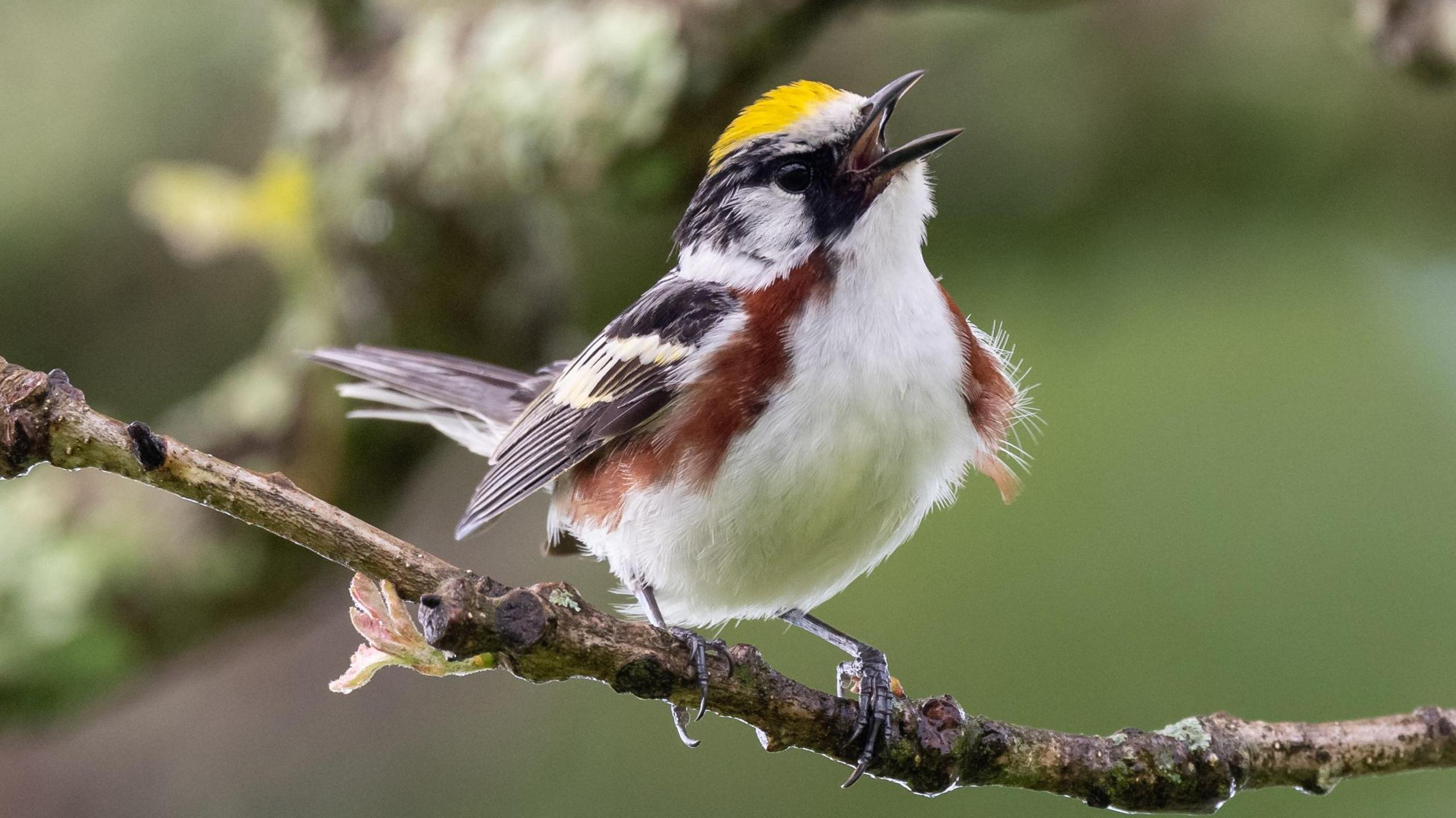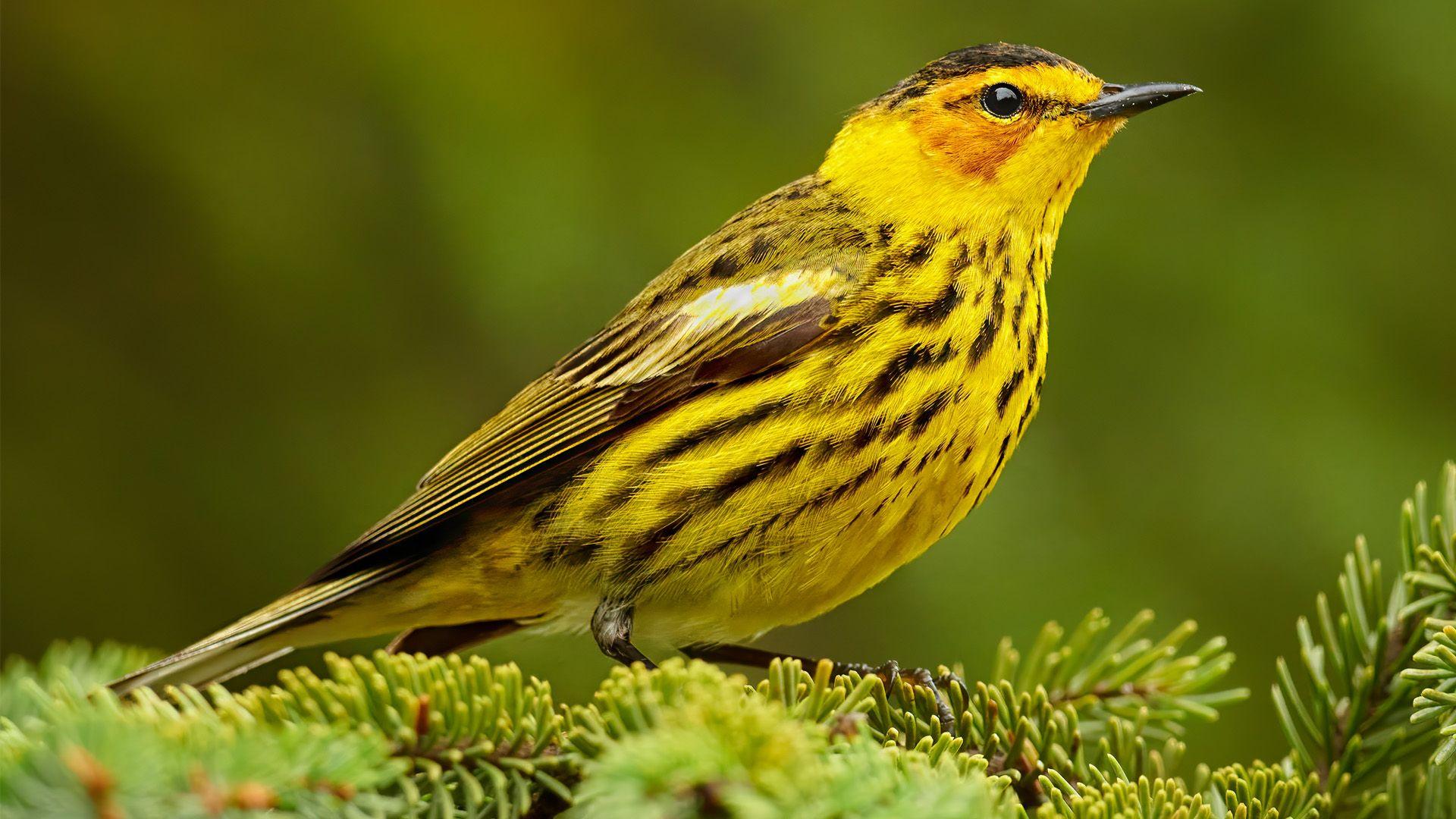Do birds have travel buddies?

The Chestnut Sided Warbler has been recorded in mixed-species flocks of birds with antwrens and tropical warblers in the US
- Published
Do birds make friends with other birds when they travel around the world? That's what a team of scientists have been trying to figure out!
The team studied information collected from more than half a million records at five bird migration sites in the Northeast and Great Lakes area of the US.
They focused on 50 different species of songbird and looked at their migration patterns and relationships over 23 years.
What they discovered was that some species form lasting relationships, and even meet up again!
Migrating birds have paler feathers to keep them cool
- Published8 December 2021
How to identify birds and their song. Video, 00:01:33
- Published23 June 2020

Cape May Warbler were also some of the songbird species studied by the researchers
Many species of birds fly across the world (or 'migrate') every year to find the best places to eat, breed and look after their chicks. Some travel thousands of miles.
To study their migration, researchers often catch birds in nets and mark them using tiny leg bands with unique numbers on. This help scientists to keep track of where they go if they are caught again in a different area.
From the information the scientists studied, they discovered that certain species of birds would get caught in nets at the same time and place, which suggested that the birds don't just make random stops but follow the same patterns together.
“With our data set, we can’t say whether these relationships are positive or negative,” says Joely DeSimone, a migration biologist at UMCES, and lead author of the study.

Scientists found two semipalmated sandpipers that met up two years in a row
From the information, the researchers weren't able to figure out if the birds relationships with each other was positive or negative. However, out of all 50 species of songbird they studied, only the American redstarts and ruby-crowned kinglets appeared to actively avoid each other - but they're not sure why yet.
At first the scientists thought the birds might see each other as competition for food after travelling thousands of miles, but they think they might also be helping each other out - by showing them where to find food.
Scientists from Environment and Climate Change Canada said they'd spotted a pair of semipalmated sandpipers standing together on a beach in Massachusetts last month, which was not unusual.
However, they were surprised to find that after studying their leg bands, these particular birds had been caught and banded at the exact same time, two years ago, in New Brunswick, Canada.
The researchers now want to further study the birds interactions with each other more at migration sites to see if they really do meet up with 'friends' each year.
